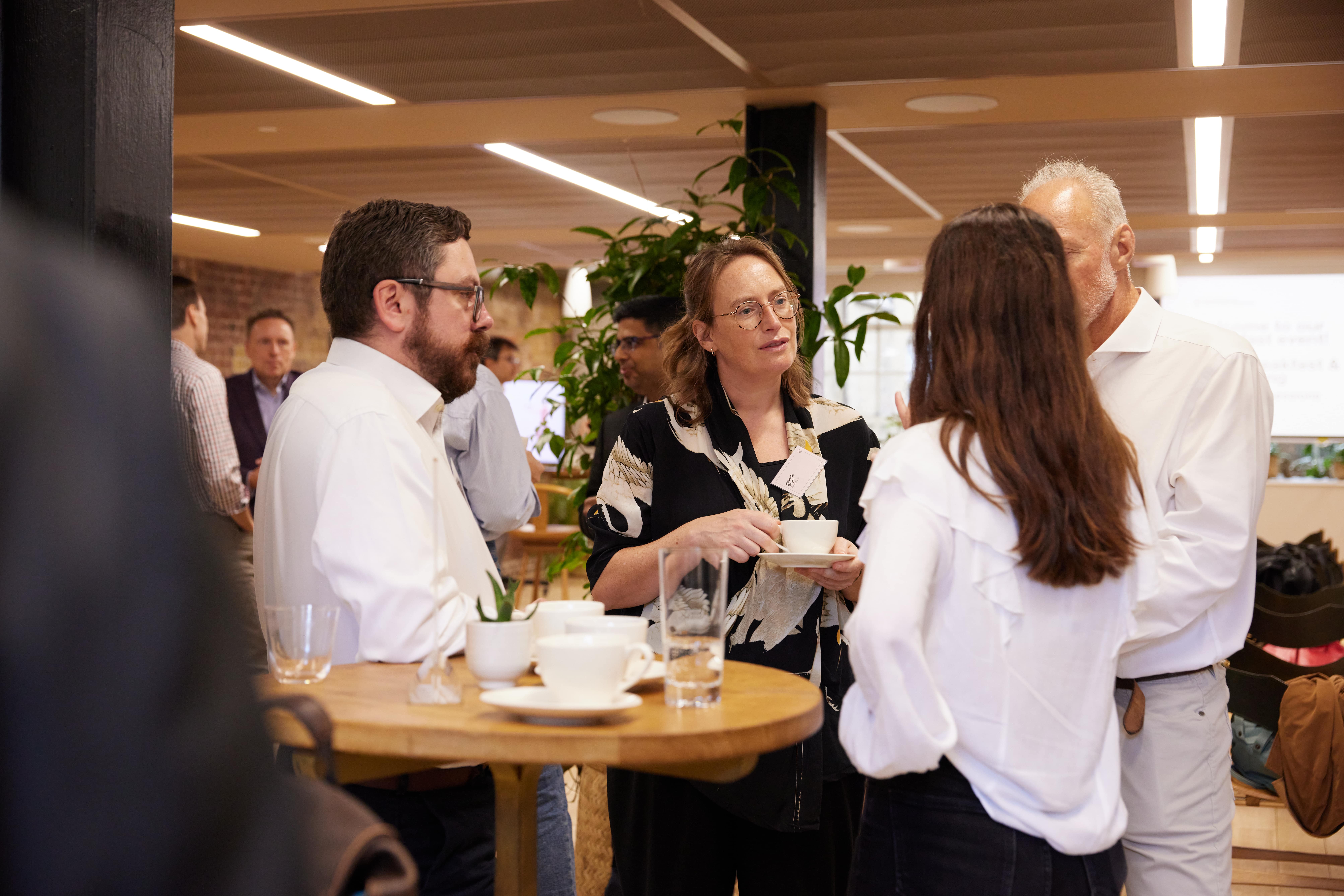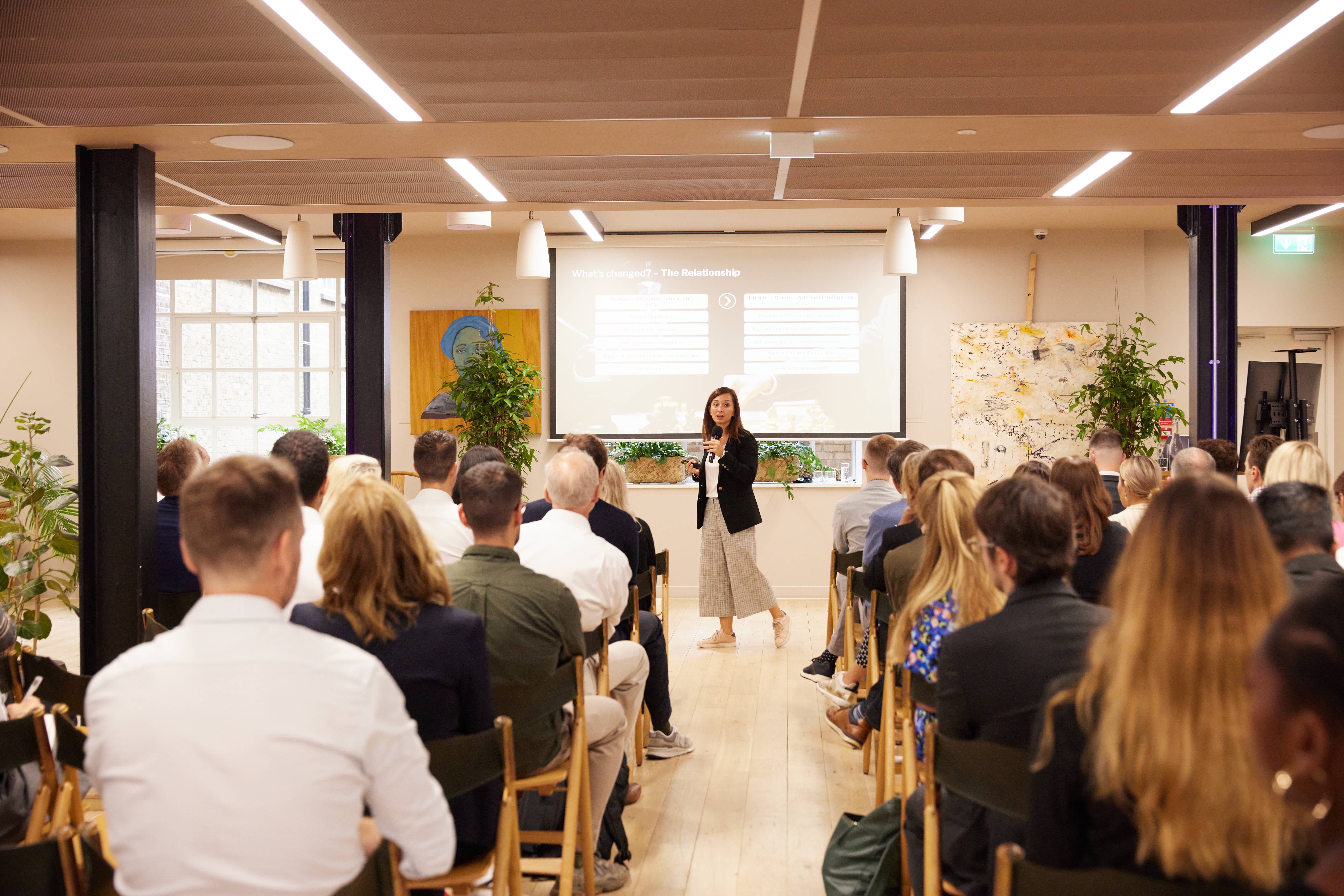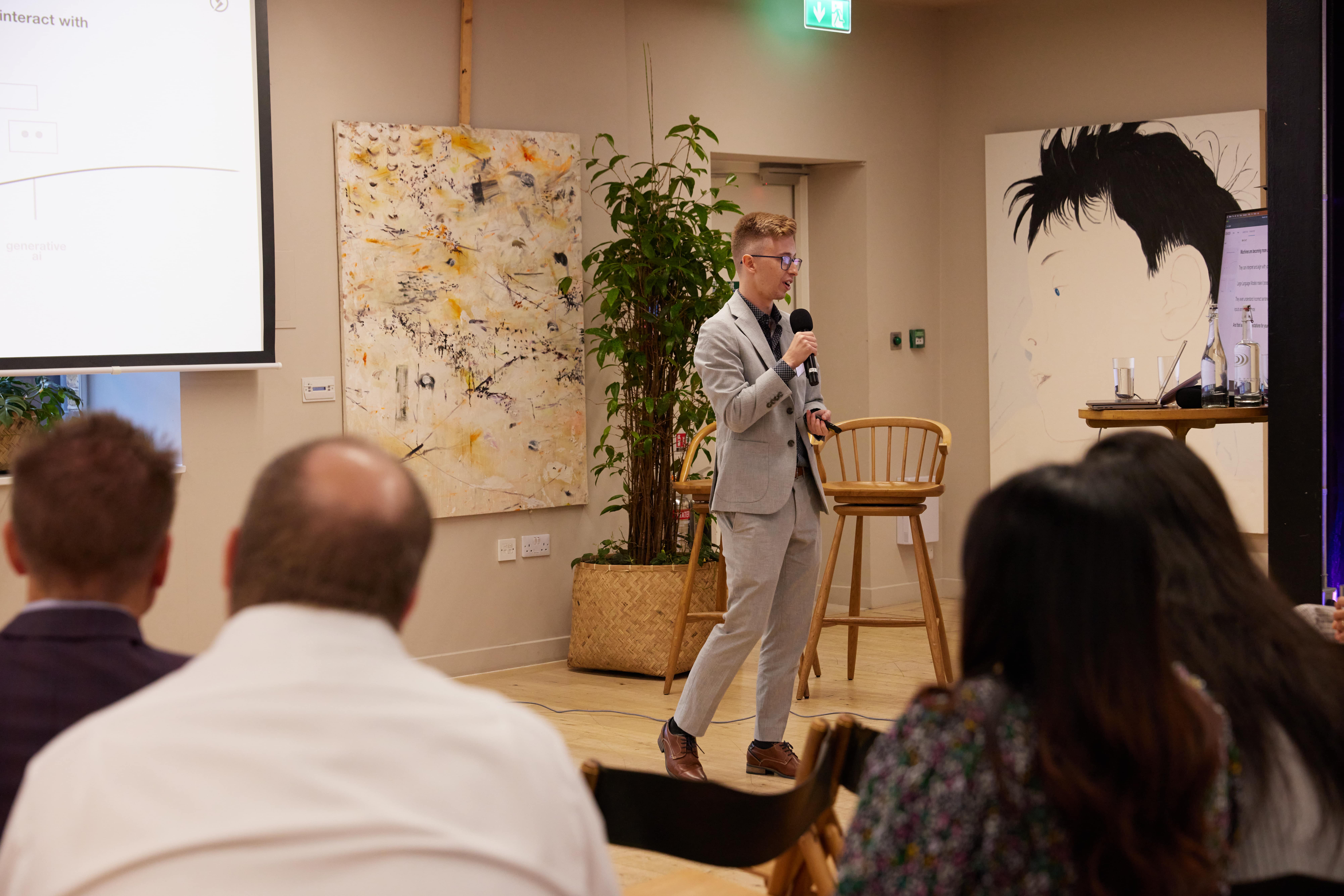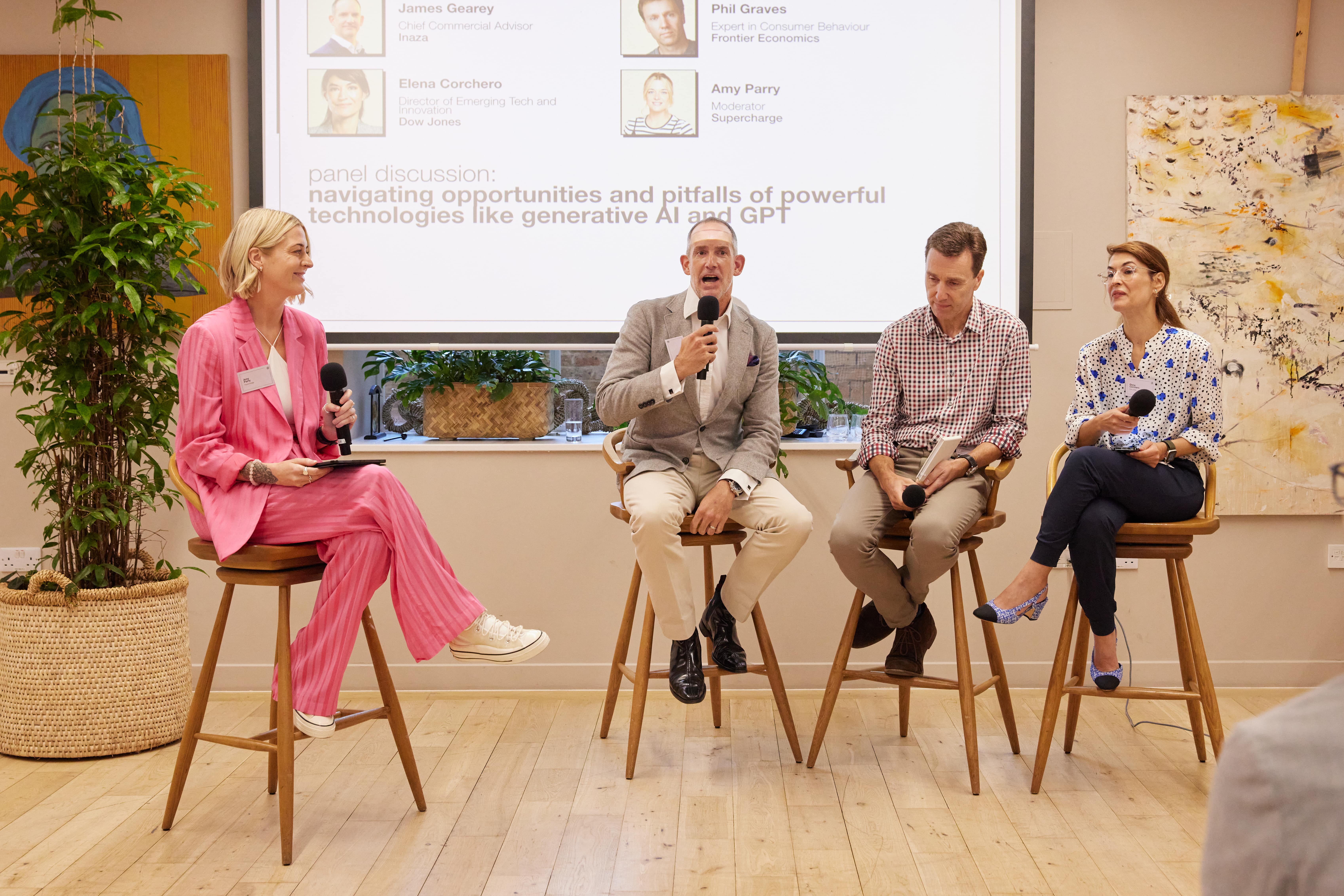share this post on
Interested in how to supercharge your digital experiences through behavioural design?
find out more 

Paula Papp – Behavioural Economist, Frontier Economics
Matt Dunn – Innovation Consultant, Supercharge
Phil Graves – Expert in Consumer Behaviour, Frontier Economics
Elena Corchero – Director of Emerging Tech and Innovation, Dow Jones
James Gearey – Chief Commercial Advisor, Inaza
With insights from industry experts, our latest Breakfast event provided a thorough understanding of the latest trends in product innovation in the insurance and banking industries.
We helped attendees understand how they can effectively utilise AI at a time when companies who embrace it are far outstripping those who don’t. AI is especially significant in the insurance and banking industries, where large amounts of data can no longer be analysed by humans alone.
AI reduces risk by automating assessments, aiding compliance, detecting and preventing fraud, and cutting operational costs. It also has the potential to revolutionise customer engagement and drive innovation.
Businesses that are embracing this new technology see improved profit margins, enhanced customer experience, and increased employee satisfaction. Those who don’t risk being left behind.
Through this lens, our experts, Paula Papp and Matt Dunn explored business success through behavioural economics and AI-driven product design, while our panel discussion delved into the opportunities and pitfalls of powerful technology like generative AI and ChatGPT.

With 15-years of experience in behavioural economics and finance, Paula Papp opened with her talk "Behavioural science and AI: An exploration for digital innovators". She explored how AI promises better user experiences, cost efficiency, and transformative interactions within organisations and with clients.
Successful technologies now gain widespread use faster than ever, causing shifts in competition and markets. AI introduces unique elements in this transition, which are not yet fully understood or appreciated. We're moving from human-human interaction towards human-AI interaction, transitioning from rigid, rule-based systems to adaptive, autonomous ones.
Understanding how people react to AI versus humans is key. A behavioural perspective is vital. Instead of asking, observing actions is essential, as initial fears may evolve into acceptance over time. These behavioural economics techniques are instrumental in achieving a smooth AI implementation. To succeed, observe not only your customers but also AI itself.

Next, Matt Dunn, our very own Innovation Consultant at Supercharge, took centre stage. His speech focused on going beyond an AI approach that ends with ChatGPT integration, and answering the question “How do we use human needs to create better AI products?”
Behavioural design is essential for creating user-friendly products that influence behaviour. Utilise these techniques when developing AI applications to positively change how your users interact with them.
Building valuable AI products requires an understanding of human quirks. You also need to determine AI's level of control through various autonomy levels: Higher autonomy can leverage AI to improve the customer experience by addressing human irrationality.
To create excellent products, prioritise human needs, tackle behavioural challenges, and employ AI autonomy levels for innovative solutions. Avoid being limited by existing applications or conventional implementations.

We ended the morning with a live panel, talking through real-life scenarios and experiences to help our attendees embrace powerful technologies like generative AI and GPT. Our panellists gave practical takeaways.
We asked our panel the following:
“Can Usage-Based Insurance (UBI) remain a viable business model if it becomes the default way to offer auto insurance? Should insurance companies start penalising risky driving to balance discounts?”
Referring to Matt Dunn’s examination of how automation can reduce operational expenses, decrease errors, and even improve the customer experience, we asked:
“How much power are insurance companies willing to give to AI, especially in the context of generative AI? Will AI primarily inform and support human decisions, or will it make decisions and automate workflows?”
Finally, we put our minds to the future. Since technology advances so quickly, there is no value in trying to guess what will happen in 5 years' time. Instead we turned our attention to the next few years:
‘In the near future (1-2 years), what should the insurance industry be mindful of as technology rapidly advances? What are the pitfalls and limitations of building generative AI-based solutions within the insurance industry?”

Want to make sure you stay in the loop for our upcoming breakfast sessions? Keen for a chance to connect with industry leaders and explore the AI trends that will help shape the future of insurance?
Watch for event announcements and be part of the conversation at our next gathering.